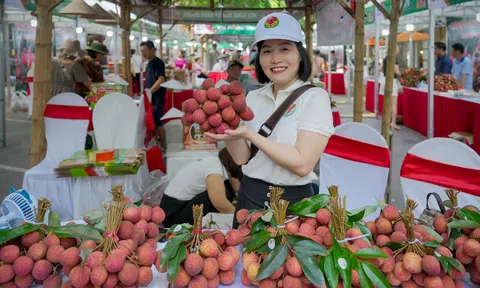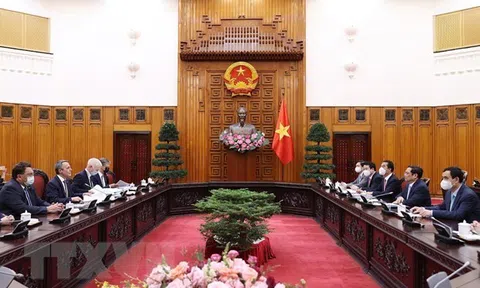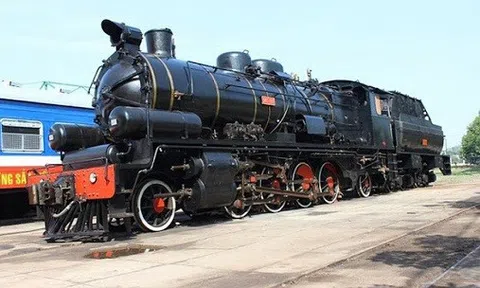Climate change is a major challenge, with 86% of wastewater untreated and 85% of total energy supply coming from non-renewable sources. The lack of clean drinking water forces over one-third of the population to use polluted water sources.
As a major international financial institution under the United Nations, the World Bank (WB) is responsible for providing loans and grants to developing countries to achieve sustainable development goals (SDGs).
Each country's water resources are a critical factor for socio-economic development. Protecting water security is central for nations to achieve the SDGs. From the role of WB in cooperation and support in achieving the Millennium Development Goals, this article highlights key aspects of water resources and WB's efforts in implementing the Global Water Security and Sanitation Partnership (GWSP) program in Vietnam.
Water Security: The Survival of Humanity
Intensifying climate change is making the threat of water insecurity increasingly urgent. Ahead of the 28th Conference of the Parties to the United Nations Framework Convention on Climate Change (COP28), ensuring water security has become imperative for survival. With the theme "Water is Life, Water is Food," World Food Day annually aims to ensure no one is left behind.
The world is facing an unprecedented clean water crisis, exacerbated by climate change (CC). According to the World Rivers Organization (WRI), about half of humanity is experiencing "clean water stress," a situation that is worsening. Governments in many countries have declared emergencies in areas facing water scarcity. Water scarcity has affected 11% of the European Union (EU) population; in South Asia, more than 74% of the population faces water shortages; in the Middle East and North Africa, this figure has reached 83%. The United Nations Food and Agriculture Organization (FAO) asserts that water resources are a key factor for socio-economic development. Protecting water security or preserving water resources is essential for countries to achieve the 2030 Agenda for Sustainable Development (SDGs).
Current State of Water Resources, Global and Vietnamese Management
On our planet, water covers about 71% of the Earth's surface, but only 2.5% is freshwater, suitable for life and use in industrial and agricultural production. Agricultural production alone accounts for 72% of water usage. Projections of water distribution by the World Rivers Network (WRI) show that 60% of irrigated crops are under water stress, many freshwater reservoirs and rivers are drying up, and groundwater resources are rapidly depleting.
While usage remains wasteful, freshwater is rapidly declining due to poor management, over-extraction of groundwater, widespread pollution, CC, and increasing competition for this invaluable resource.
Over 80% of the world's water is discharged into the environment untreated or reused. Waste and inadequate resource utilization in production and daily life have come at a high cost. Changing perceptions, from individuals to macro governance institutions, is crucial to transforming the current state of water security. The FAO Director-General emphasized: "We all must stop viewing water as an infinite resource; this is key to addressing the challenge." Immediate action requires coordinated plans at the national and regional levels. To ensure water security, a comprehensive policy mechanism is needed to enhance proactive water resource management, ensuring safe water supply for essential needs in all situations, especially in major urban areas.
Vietnam currently has 3,450 rivers and streams that are 10 km or longer, with a total surface water volume of 830-840 billion cubic meters; transboundary rivers and streams contribute approximately 63% of this water. The total groundwater resources in the country are around 91 billion cubic meters, with an exploitable capacity of 22.3 billion cubic meters per year (General Statistics Office 2021).
Besides the river system, the country has over 7,160 irrigation reservoirs with a total capacity of 70 billion cubic meters, and an average annual rainfall equivalent to 640 billion cubic meters. In the past years, water usage has been wasteful, with agriculture consuming more than 80% of the total water, yet each cubic meter of water only generates 2.37 USD in GDP, which is significantly lower than the global average of 19.42 USD.

Vietnam faces challenges in water security (Photo: MT&CS Online Newspaper) The number of urban areas nationwide has reached 898, and by 2030, the urban population is expected to be 45% of the total population. Water demand in 2025 is projected to be 120.4 billion cubic meters, increasing to 121.5 billion cubic meters by 2030, and 130.9 billion cubic meters by 2050. Rapid urbanization raises urgent issues related to wastewater and potable water supply (General Department of Meteorology and Hydrology 2021).
Surface water volume depends on external water sources, while groundwater reserves are declining, and large areas of natural forest watersheds are no longer available. Together with pollution of surface water and groundwater, the impacts of climate change have made saltwater intrusion unpredictable and exacerbated extreme weather conditions, leading to prolonged droughts and increasingly severe floods.
Analyzing the situation, researchers believe that many threats to water security stem from subjective factors in agriculture, industry, and small-scale handicrafts, as well as violations of water protection corridors, altering flow patterns, reducing forest land, and water source capacity.
Vietnam is adversely affected by the reliance on external water sources. When upstream countries build dams and block flows, it immediately affects the livelihoods of millions of people. The Ministry of Agriculture and Rural Development has indicated that dependence on external water sources is significant. For example, 90.1% of the water in the Mekong River basin, 38.5% in the Red River basin, and 27.1% in the Ma River basin originate from upstream countries. Research by the Mekong River Commission shows that the operation of completed hydropower projects will have substantial adverse effects on Vietnam, with the livelihoods of people in the Mekong Delta potentially decreasing by up to 97% by 2040.
Researchers highlight that a lack of focus on improving water use efficiency, especially in agriculture, forestry, and fisheries, increases production costs and directly affects the competitiveness of agricultural products and producers' profits, severely impacting social life.
Climate change is perceived as a natural phenomenon, an objective factor, but it is fundamentally driven by human activities, leading to rising sea levels and worsening saltwater intrusion, as well as reckless deforestation that disrupts ecological balance, causing unusual floods and erosion, and reducing water retention capacity.
The World Bank assesses Vietnam as one of the six countries most severely affected by climate change. Research both domestically and internationally has shown that if sea levels rise by 1 meter, approximately 7.14% of agricultural land, 28.67% of wetland areas, and 10.74% of urban areas in the Mekong Delta and Red River Delta will be heavily affected.
The increasing impact of climate change and the growing complexity and unpredictability of water security challenges are becoming more severe. Recognizing this, the Vietnamese government has focused on and taken strong measures to ensure water security, aiming for sustainable water resource development and efficient water usage.
The World Bank's support and insights from various projects
With close cooperation from the government, the World Bank has recently helped build and complete 436 irrigation dams across the country. These dams have improved safety conditions to cope with climate change threats and global warming, protecting over 4.3 million people from dam failures.
Analyzing risks, safety, challenges, and opportunities in water use, researchers have noted strengths in the institutional and legal framework for water security, based on a risk-based approach as stipulated in the Water Safety Law. They have also suggested areas for improvement in implementation and recommended risk-based and traditional management solutions. Accordingly, efforts to ensure water security with effective World Bank support have made significant progress.
Analysts remark that the partnership between the Vietnamese government and the World Bank has adapted to increasingly complex challenges. This journey has ranged from developing water resources for cities and towns to renovating irrigation systems, promoting investment growth in urban wastewater management, drainage, rural water supply, and dam restoration, focusing on building resilience while mitigating climate change impacts.
The Global Water Security and Sanitation Partnership (GWSP) within the Sustainable Development Goals (SDGs) framework highlights that climate change exacerbates sustainable development issues due to risks from rising sea levels, major storms, floods, and high salinity. Inefficient water management in agriculture contributes to increased greenhouse gas emissions. According to the World Bank, water management challenges are evident in droughts, floods, and environmental pollution. Water stress during the dry season in major river basins, which provide 80% of the country's GDP, is predicted to worsen in the coming decades. Along with the increasing costs of flood risk, environmental pollution, estimated to reduce GDP by 3.5% annually, has pushed the annual average growth rate down to 6%. Without decisive action, water resources could become a significant obstacle to achieving the goal of becoming a high-income developed country by 2045.
In research towards adaptive, clean, and safe water systems, the World Bank has supported the Vietnamese government in developing and implementing institutional, infrastructure, incentive, and information technology recommendations. This research provides means to integrate innovations into flexible policy actions to respond to new and urgent issues, promoting dialogue among ministries on water security. The World Bank has emphasized the need to repair and enhance the safety of reservoirs and dams.
The GWSP program has supported the development and implementation of the Mekong Delta Regional Master Plan, amendments to the National Water Resources Law, and technical support for nature-based flood management solutions. The GWSP has promoted private sector involvement in water pollution management and reducing greenhouse gas emissions in agriculture. The agriculture sector contributes to one-third of greenhouse gas emissions, and efforts in this sector will lay the foundation for a national transition to low-carbon agriculture. The GWSP contributes positively to improving water use efficiency in agriculture.
Designing and implementing measures to enhance the resilience of rural water systems while contributing to sustainable development plans in World Bank loan programs are essential to addressing water challenges in the Mekong Delta. Analytical and cooperative activities in these areas have and will continue to create positive impacts in the region.
The Rural Water Supply and Sanitation Scale-Up Project has connected 1.2 million people to sustainable water systems and established 288,000 water supply connections, helping 4.2 million people in over 700 communes access community-wide sanitation systems, and building more hygienic toilets in 300,000 households and 1,600 schools.
Similarly, the Dam Safety and Rehabilitation Project has improved the safety conditions of 436 irrigation dams to equip them to face future threats from climate change and global warming. The World Bank's efforts are protecting 4.3 million people from dam failure risks. The Vinh Phuc Flood Risk and Wastewater Management Project aims to improve living conditions in urban areas, protecting over 632,000 people from flood risks and improving sanitation facilities for 121,000 residents.
In conclusion
Playing a crucial role in all economic and social aspects, water security in Vietnam is under threat. Ensuring water security and dam safety has always been a priority for the Party and State, with policies issued to meet the requirements of socio-economic development, national security, defense, and the livelihoods of all citizens.
With effective cooperation and support from the World Bank, Vietnam has made significant progress in water security efforts over the past decades. The partnership between the Vietnamese government and the World Bank has adapted to complex challenges to promote growth and investment in wastewater management, drainage, rural water supply, and dam restoration. This journey is focusing on building resilience while mitigating climate change impacts, yielding positive results.
With the hope of a stronger partnership in achieving Millennium Development Goals, the World Bank is expected to continue its active cooperation and support, aiming to make Vietnam a high-income developed country soon.

























